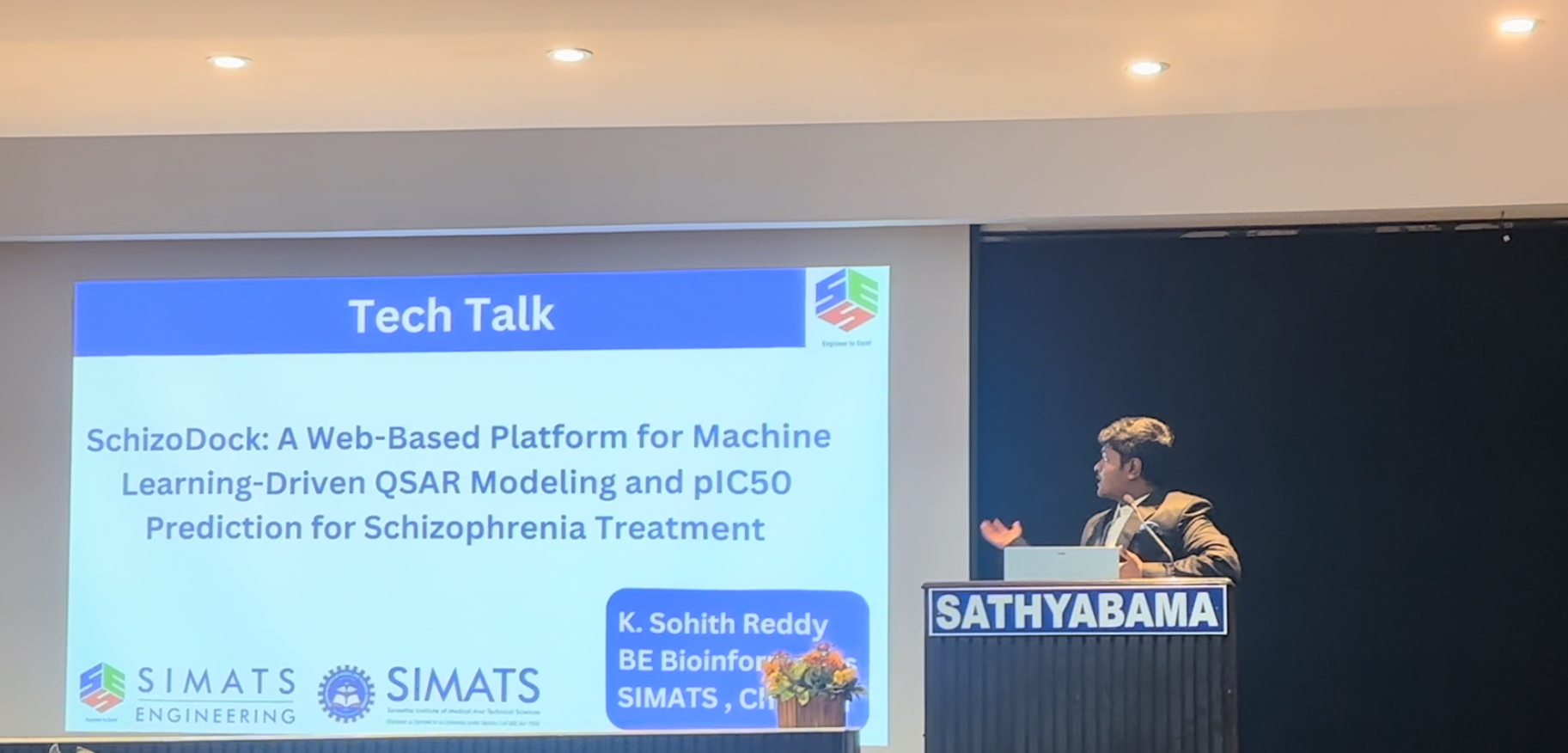SchizoDock: A Web-Based Platform for Machine Learning-Driven QSAR Modeling and pIC50 Prediction for Schizophrenia Treatment
Date:
 Schizophrenia is a chronic mental illness which affects thought, affect, perception and behavior. The goal of this study is to use computational drug discovery (CDD) techniques to discover lead compounds that target Excitatory amino acid transporter 3 as a potential target for Schizophrenia. QSAR modeling is used in this study to compare different machine learning models in order to predict the potency (pIC50) of candidate compounds, which are then validated by molecular docking based on their binding affinity. A non-redundant dataset consisting of 217 compounds for EAAT3 were retrieved from the ChEMBL database. 880 substructure fingerprints were used to define these compounds, followed by multiple machine learning models building and comparison using LazyPredict. The Random Forest Regressor achieved the highest accuracy, with a performance of 91.2%, as determined by its root mean square error (RMSE), R-squared value, and time efficiency. RFR-derived Gini index revealed the importance of features include, SubFP100, SubFP16, SubFP3 in the compounds. Kennard–Stone algorithm was used to select a diverse set of 10 compounds from the active inhibitors list for testing. The API, named SchizoDock, was developed and deployed using Streamlit. Later, molecular docking was performed using PyRX to evaluate binding affinity, and generated visualizations using ChimeraX. Finally, the lead compound (CHEMBL4177507) with pIC50 7.25M and Binding affinity of -9.2kcal/mol was identified. This ML-Based QSAR Modeling and docking approach is an effective strategy for accelerating drug discovery. YouTube Video
Schizophrenia is a chronic mental illness which affects thought, affect, perception and behavior. The goal of this study is to use computational drug discovery (CDD) techniques to discover lead compounds that target Excitatory amino acid transporter 3 as a potential target for Schizophrenia. QSAR modeling is used in this study to compare different machine learning models in order to predict the potency (pIC50) of candidate compounds, which are then validated by molecular docking based on their binding affinity. A non-redundant dataset consisting of 217 compounds for EAAT3 were retrieved from the ChEMBL database. 880 substructure fingerprints were used to define these compounds, followed by multiple machine learning models building and comparison using LazyPredict. The Random Forest Regressor achieved the highest accuracy, with a performance of 91.2%, as determined by its root mean square error (RMSE), R-squared value, and time efficiency. RFR-derived Gini index revealed the importance of features include, SubFP100, SubFP16, SubFP3 in the compounds. Kennard–Stone algorithm was used to select a diverse set of 10 compounds from the active inhibitors list for testing. The API, named SchizoDock, was developed and deployed using Streamlit. Later, molecular docking was performed using PyRX to evaluate binding affinity, and generated visualizations using ChimeraX. Finally, the lead compound (CHEMBL4177507) with pIC50 7.25M and Binding affinity of -9.2kcal/mol was identified. This ML-Based QSAR Modeling and docking approach is an effective strategy for accelerating drug discovery. YouTube Video


